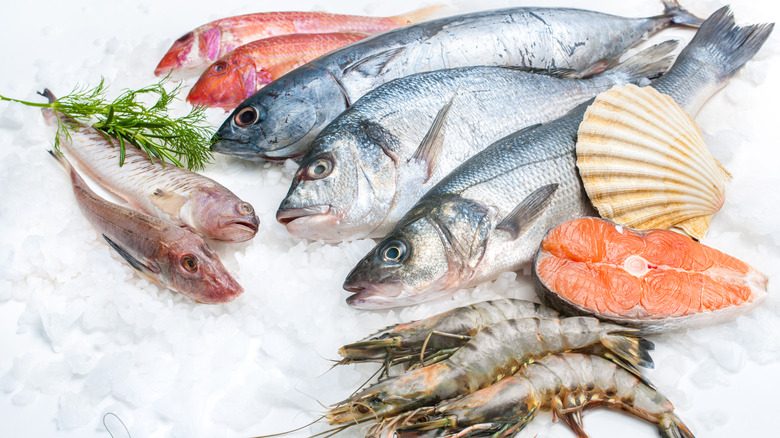What You Should Know Before You Swap Fish In A Recipe
Fish is an incredible option for any meal. For one, it comes with a bounty of health benefits: It's high in protein, vitamins, minerals, as well as those critical omega-3 fatty acids, according to the NIH. Plus, it doesn't require long cooking times, and has enough intrinsic flavor to shine on its own. Nevertheless, for some, cooking fish can feel intimidating. And a central point of concern can start with considering the available options at the store.
Say you're at the supermarket, and the fish variety mentioned in a recipe isn't available at the counter or freezer. There's no need to cancel fish night; Familiarize yourself with all the possible swaps, instead. The interchangeability of different fish might surprise you. And, as long as you stay within certain categories, your dinner may even be enhanced.
First off, start by noting the cut of the fish employed in the dish. Depending on whether you need a whole fish, a steak cut, or one of the three fish fillet styles has a bigger impact than the precise species. Even the weight is a crucial factor; There's a marked difference between a multi-pound fish and a much smaller, lighter variety. Furthermore, whether a fillet is skin-on or off is important, too. Once you've taken these qualities into account, you can dive into the species themselves.
Categorize the fattiness of the fish
The difference between a medium rare tuna steak and a tilapia fillet is immediate. However, it can become more confusing to delineate based on the similarities between different species of fish. So for a more clear way of categorizing fish, consider the fat content. Substitutions based upon this criteria will aid in keeping with a cooking method, preventing any dried-out or undercooked results.
At the fatty end of the spectrum there's salmon, which is also closely interchangeable with trout, as well as oily tuna varieties like amberjack, mackerel, and Arctic char. More moderate are fish like black bass, snapper, branzino, and sea bream. Many of these are enjoyed whole, but in filleted form, you can also get away with replacing tilapia with catfish. Cod, mahi mahi, striped bass, pollock, and halibut are some of the leanest fish on the market. Delicate yet flavorful, they require techniques like the foil pocket grilling method to shine, so it's best not to mix them with other varieties. Don't forget that the majority of small, salty fish like anchovies, herring, and smelt are also interchangeable.
If you're not completely sure about which fish to choose, it's helpful to ask a friendly fishmonger. And remember which cheap fish are worth avoiding; Just because it's available doesn't mean it's an ideal replacement for your recipe. Checking for freshness and seasonality will pay off in better flavor regardless of how you ultimately cook your fish.

